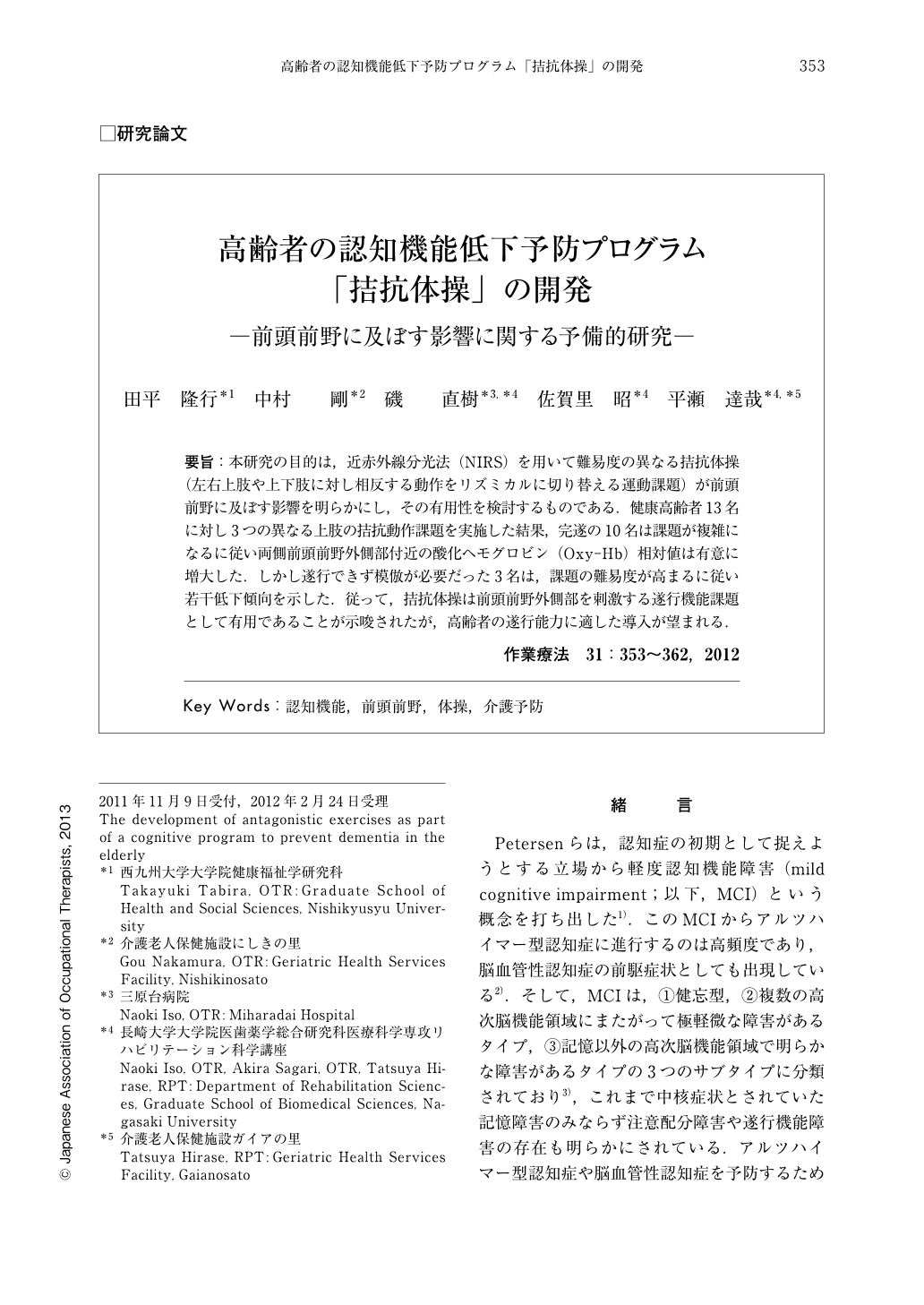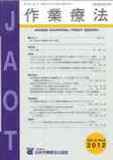Japanese
English
- 販売していません
- Abstract 文献概要
- 1ページ目 Look Inside
- 参考文献 Reference
- サイト内被引用 Cited by
要旨:本研究の目的は,近赤外線分光法(NIRS)を用いて難易度の異なる拮抗体操(左右上肢や上下肢に対し相反する動作をリズミカルに切り替える運動課題)が前頭前野に及ぼす影響を明らかにし,その有用性を検討するものである.健康高齢者13名に対し3つの異なる上肢の拮抗動作課題を実施した結果,完遂の10名は課題が複雑になるに従い両側前頭前野外側部付近の酸化ヘモグロビン(Oxy-Hb)相対値は有意に増大した.しかし遂行できず模倣が必要だった3名は,課題の難易度が高まるに従い若干低下傾向を示した.従って,拮抗体操は前頭前野外側部を刺激する遂行機能課題として有用であることが示唆されたが,高齢者の遂行能力に適した導入が望まれる.
The purpose of this study was to investigate the effectiveness of antagonistic exercises as part of a cognitive program for preventing dementia in the elderly by examining the prefrontal activity of elderly subjects using NIRS. Thirteen healthy elderly people performed three antagonistic hand-sign exercises of different degrees of difficulty. The antagonistic A task was to use rock and paper, the B task was to use paper and scissors and the C task was to use the pistol hand and fox hand. Among the 10 people who accomplished all three tasks, the Δ Oxy-Hb of the bilateral dorsolateral prefrontal cortex was significantly increased in response to the difficulty of the antagonistic exercises. Three of the subjects needed to imitate the actions of a facilitator in order to successfully perform the exercise, indicating a slight decrease in their Δ Oxy-Hb level with regards to the difficulty of the antagonistic exercises. Therefore, we suggest that antagonistic exercises are executive function tasks, and are effective as a cognitive function to increase the dorsolateral prefrontal cortex activity to prevent dementia.

Copyright © 2012, Japanese Association of Occupational Therapists. All rights reserved.


